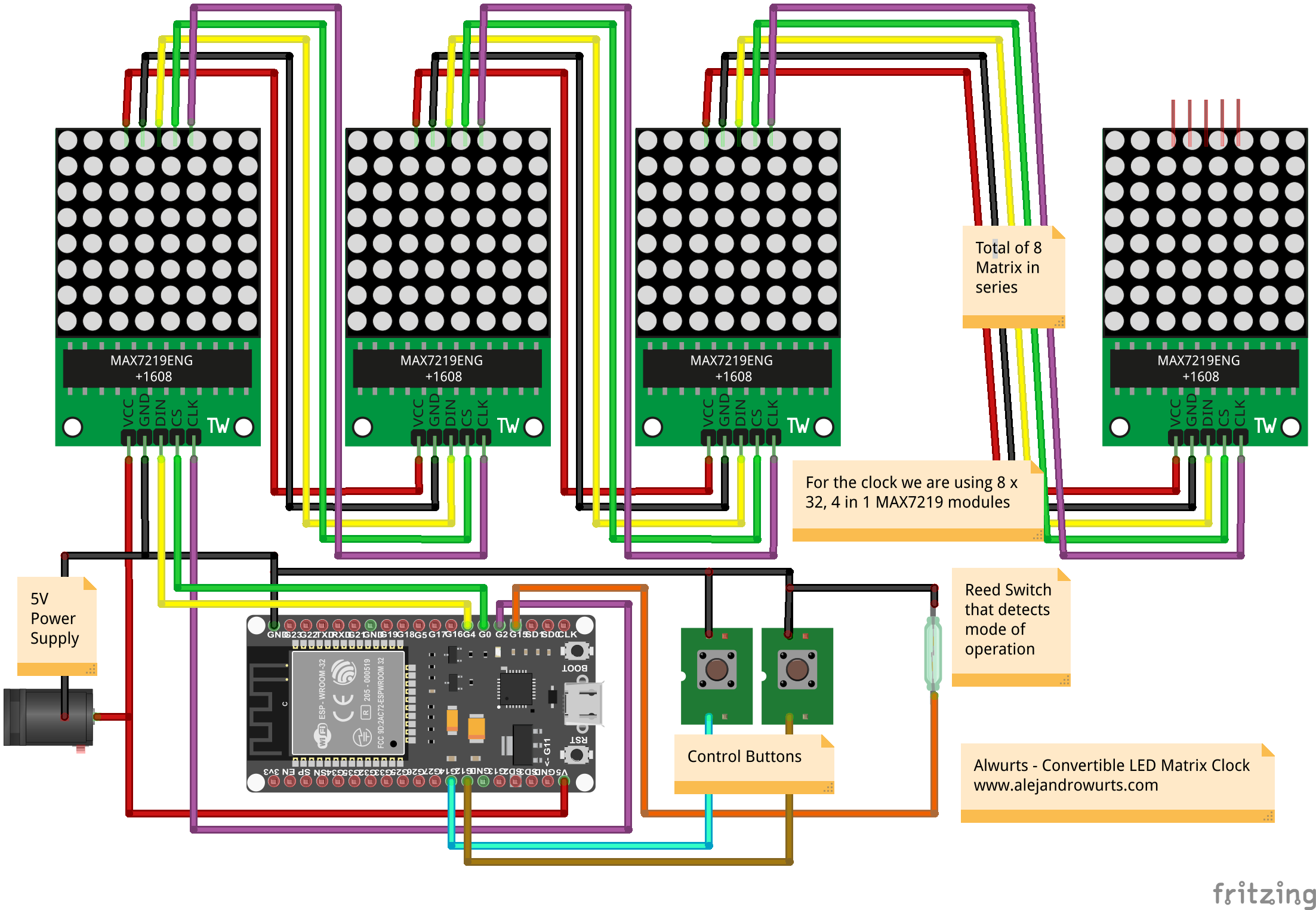Check out my website www.alejandrowurts.com where the source of this project is, and where I also publish about other projects.
Convertible ConceptInitially I was going to design a clock that would have used a single 8 x 32 matrix module, but as way of innovating on existing designs, I decided to use two 8 x 32 modules and design the case so that it would have a convertible aspect.
My initial concept of how I want the matrix to convert can be seen in the next picture. The matrix should be able to convert its LED resolution from a 8 x 64 single height format to a 16 x 32 double height format and vice versa.
For the first prototype of the convertible concept, I used Fusion 360 to design a case with a hinge in the middle that allows the two 8 x 32 matrix to convert and does change resolution.
As mentioned in the concept the prototype has two modes pictured below:
- Double height mode 16 x 32 (first picture below)
- This mode allows for the display of bigger numbers or letters.
- Single height mode 8 x 64 (second picture below)
- In this mode the letters are smaller but you have additional space to display other things.
In order for the microcontroller to tell in which mode the clock is being used a reed switch was located on one matrix and a magnet on the other matrix. When the switch and the magnet come together they trigger a signal that tells the clock to be in double height mode, on the other instance, if they’re apart from each other no signal is sent and the clock knows to be in single height mode.
Below is a picture of all the components and connections inside one side of the clock. For the prototype V1 the internals are still a bit messy, and use a lot of hot glue to keep everything in place, further improvements should tackle cable management and anchoring of components.
Two buttons were added to the back of the matrixes to allow, control of different functions, in the case of the prototype V1 is used for brightness control.
On the back you can find the cable that goes between the two displays, a 5V DC jack and a debug port where a USB cable can pass through.
The software for this project was developed using Arduino on an ESP32 together with Magic Designs MD_PAROLA library which makes it easy to develop the convertible concept, since by default it allows for the creation of display zones that can be controlled independently.
Working Prototype V1Below is a GIF, where you can see the functioning of the V1 prototype. Current features are:
- Convertible from 8 x 64 (single height) to 16 x 32 (double height) resolution.
- Big clock on double height mode.
- Small clock and text display available on single height mode.
- Brightness up/down control trough buttons.
























Comments